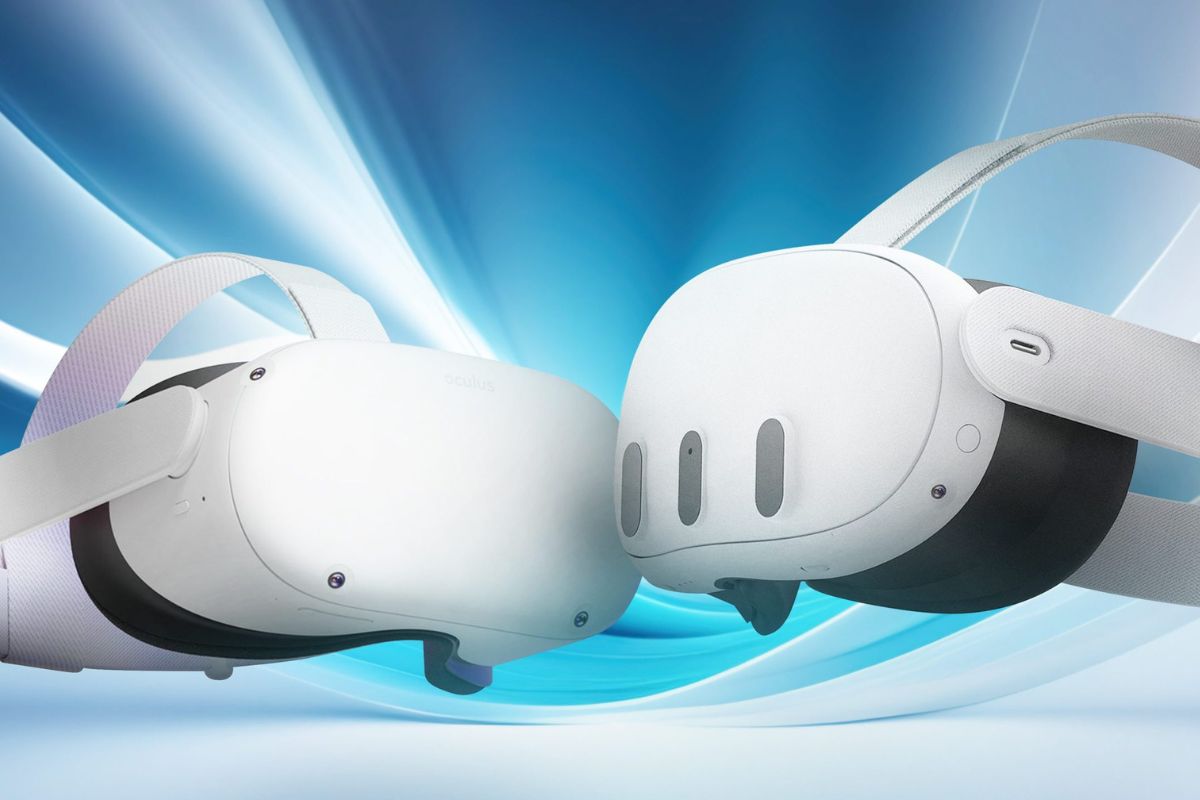Virtual reality (VR) is evolving at a rapid pace, and Meta’s Quest series has been at the forefront of the industry. With the launch of the Meta Quest 3, users are faced with a question: should you stick with the Quest 2 or upgrade to the latest model? This guide will break down the key differences and help you decide which headset fits your needs.

The Meta Quest 2 has been a fan favorite since its release in 2020, offering an affordable entry point into standalone VR. However, with the Quest 3 hitting the market, Meta has raised the bar by introducing better hardware, improved graphics, and new features. Let’s explore how these two VR headsets stack up against each other in terms of design, performance, features, and value.
Design and Comfort
The Quest 2 features a lightweight design, weighing around 503 grams. Its minimalist aesthetic and comfortable foam padding make it easy to wear for extended VR sessions. The adjustable straps ensure a snug fit, but some users find the default head strap inadequate, often opting for third-party accessories to enhance comfort and stability.
The Quest 3 boasts a slimmer, more refined profile compared to its predecessor. Meta has reduced the weight slightly and improved the ergonomics, making it more comfortable for prolonged use. The updated strap system is also more adjustable and durable, eliminating the need for immediate aftermarket upgrades. The new design integrates a pancake lens system, which contributes to the headset’s slimmer build.
Display and Visual Quality
The Quest 2 comes with an LCD display offering a resolution of 1832 x 1920 pixels per eye and a refresh rate of up to 120 Hz. While the visuals are crisp and immersive for most VR experiences, the lack of OLED technology means blacks are less deep, and colors can appear less vibrant.
The Quest 3 takes visual performance to a whole new level, featuring a higher-resolution display (2064 x 2208 pixels per eye) and improved color reproduction. It also uses pancake lenses, which reduce glare and provide better clarity. While the refresh rate remains at 120 Hz, the overall visual experience feels more vibrant and lifelike, making it a significant upgrade for users prioritizing visual quality.
Processing Power and Performance
Powered by the Qualcomm Snapdragon XR2 Gen 1 chipset, the Quest 2 delivers reliable performance for most VR applications. However, as newer games and experiences demand more computational power, the Quest 2 shows its limitations, especially in graphics-intensive titles.
The Quest 3 is equipped with the Qualcomm Snapdragon XR2 Gen 2 chipset, offering a noticeable performance boost over the Quest 2. This translates to faster load times, smoother gameplay, and support for more graphically demanding experiences. The enhanced performance also allows developers to create richer and more complex VR worlds, which may be exclusive to the Quest 3.
Controllers and Hand Tracking
The Quest 2’s controllers are intuitive and responsive, featuring basic haptic feedback and motion tracking. Hand tracking is available but feels limited in precision and responsiveness compared to newer technologies.
The Quest 3 introduces upgraded Touch Plus controllers, which are more ergonomic and feature improved tracking. These controllers no longer require external tracking rings, making them more compact and easier to use. Hand tracking on the Quest 3 is also significantly enhanced, offering greater accuracy and responsiveness for more immersive gameplay.
Content Library and Software
The Quest 2 benefits from years of support and an extensive library of VR titles. It runs most of the same apps and games as the Quest 3, making it a viable option for budget-conscious users who want access to Meta’s robust ecosystem.
The Quest 3 is backward-compatible with Quest 2’s library while also unlocking access to future titles optimized for its hardware. Developers are already working on games and applications that leverage the Quest 3’s advanced capabilities, ensuring it will remain relevant for years to come.
Battery Life
The Quest 2’s battery lasts around 2 to 3 hours, depending on the intensity of use. While sufficient for casual gaming sessions, heavy users may find themselves reaching for a charger more often than they’d like.
Despite its upgraded hardware, the Quest 3’s battery life is comparable to the Quest 2, averaging 2 to 3 hours per charge. Meta has focused on efficiency, but the additional processing power doesn’t translate into extended battery performance.
Price and Value
At its current price, the Quest 2 remains one of the most affordable standalone VR headsets on the market. It’s an excellent choice for newcomers to VR who want a solid experience without breaking the bank.
The Quest 3 is priced significantly higher than the Quest 2, reflecting its advanced features and improved hardware. While the upfront cost is steeper, the enhanced performance and future-proofing make it a worthwhile investment for serious VR enthusiasts.
Conclusion: Which One Should You Choose?
The choice between the Quest 2 and Quest 3 ultimately depends on your priorities and budget. If you’re new to VR or looking for a cost-effective option, the Quest 2 offers excellent value and access to Meta’s extensive content library. However, if you’re a seasoned VR user or want the best possible experience, the Quest 3’s superior display, performance, and mixed reality capabilities make it a compelling upgrade.
Regardless of your choice, both headsets deliver on Meta’s promise of immersive, standalone VR experiences, ensuring countless hours of virtual adventures.